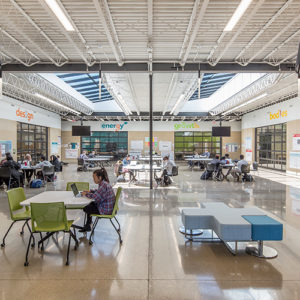Ingredient 2: Cultural Identity
Cultural identity is the most important remembrance factor of something, someone, or somewhere. It’s one’s ability of self-conception and self-perception toward distinct culture. This is built through various avenues of a “brand.” Brands are everywhere and continue to be instinctively recognizable to the human mind. They come in all shapes, sizes, colors, and media types, […]
Cultural identity is the most important remembrance factor of something, someone, or somewhere. It’s one’s ability of self-conception and self-perception toward distinct culture. This is built through various avenues of a “brand.” Brands are everywhere and continue to be instinctively recognizable to the human mind. They come in all shapes, sizes, colors, and media types, and create an eternal awareness of its origins. It’s a product (physical/virtual) manufactured by a group with direct intentions to relay a specific message to others. Architecturally, space making, circulation, spatial experience, and branding are the key factors in making a space and organization’s cultural identity accessible to its employees, customers, executives, and most importantly, the targeted public.
Design is a comprehensive process of understanding a client’s brand, culture, and goals. Once we understand the program and culture, we design to not only meet but exceed expectations of the brand. It’s our responsibility as the architect to propose the brand in “built form” in ways that challenge the preconceived idea of the space and how it can assist in encouraging a brand’s growth and the various ways in which employees tell the story. An organization’s brand is as strong as the employees who activate it, so matching the design to the mission is vital to the narrative.
In conveying the narrative of The Forge by Pillar, it was important to note that the brand is both mental and physical. The brand standards are universal on a macro level including all major space components essential to spur innovation. The idea is that the space has no constraints and, subsequently, neither do their ideas. The physical space includes elements to support that: the color code supports functionality as well as the brand’s vibrancy, a sign that says “Experience” to represent new ideas, and an overall industrial tone. Although there are multiple physical spaces throughout the Midwest, the brand elements set forth in Columbus have transcended to each location.

Conversely, Wendy’s 90 Degree Lab is a space that allows its users to disconnect from the well-known, universal Wendy’s brand and introduce a freshness. When entering the space, there are elements that mimic a typical Wendy’s restaurant, but it is infused with technology and has an openness and freedom that isn’t found in the space a burger can be ordered. The colors and the signage are universal; the 90 Degree Lab is a brand on its own merit known for its technology applications.
A cultural identity assists in defining the values of the organization. Not only is a brand recognizable from an outside perspective, a strong brand connects it employees with a “We’re in this together” type of attitude. When people feel connected to a brand and a culture, people will stick around. Why is this important in the success of an innovation center? New ideas stem from people. When people inside the spaces feel connected and confident and part of a team, they want to offer their best. A cultural identity connects space to the people and that spurs innovation.